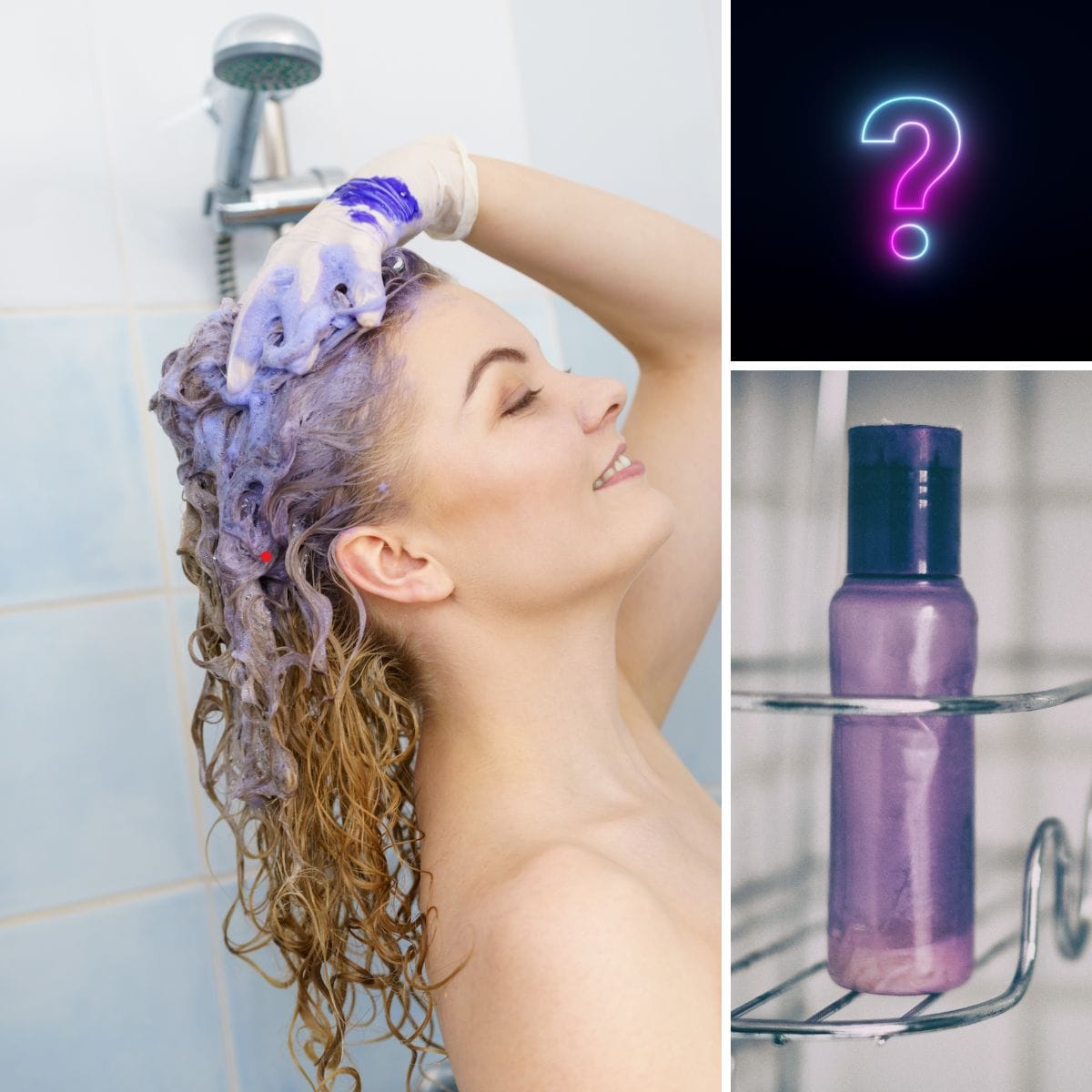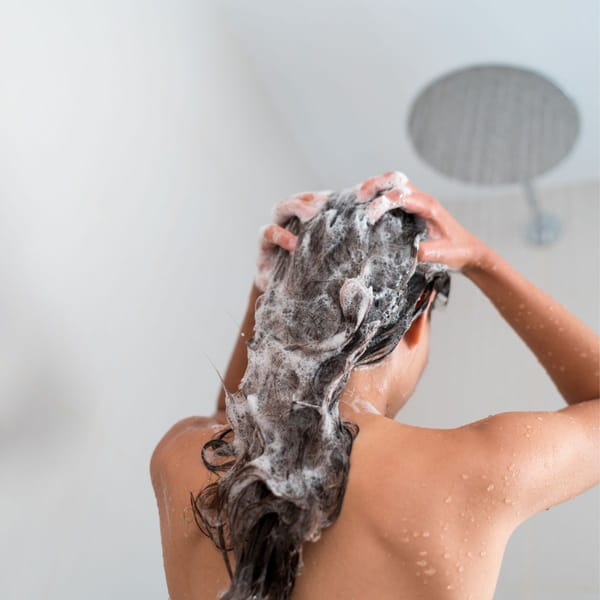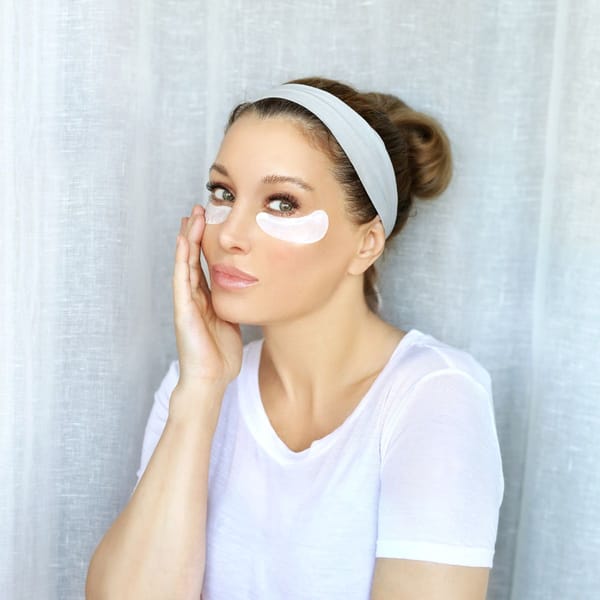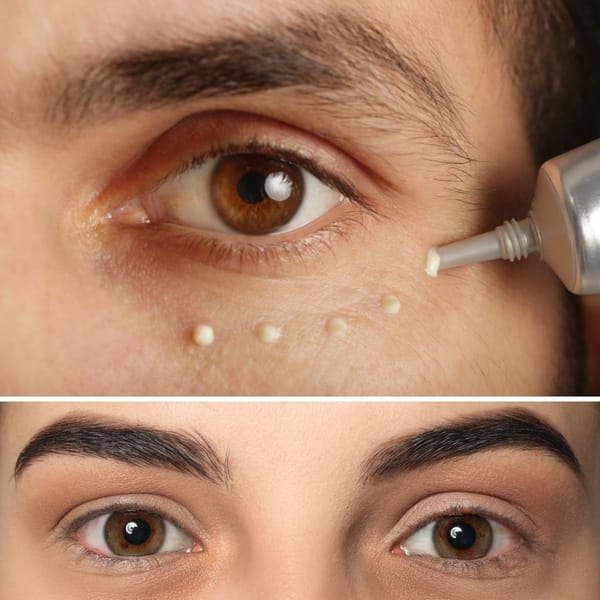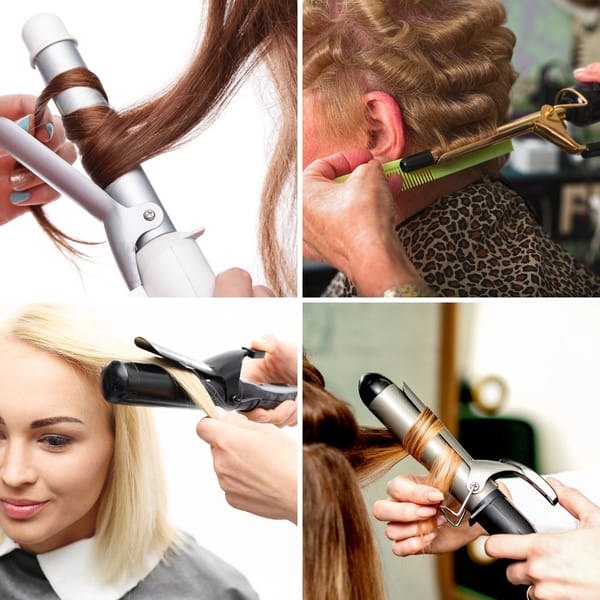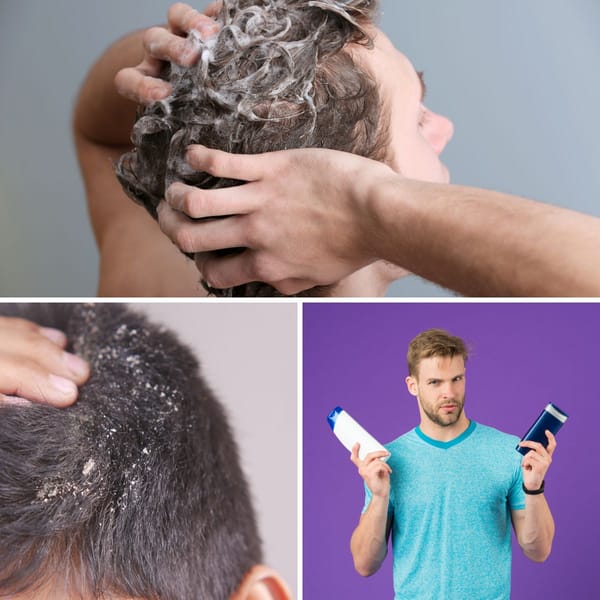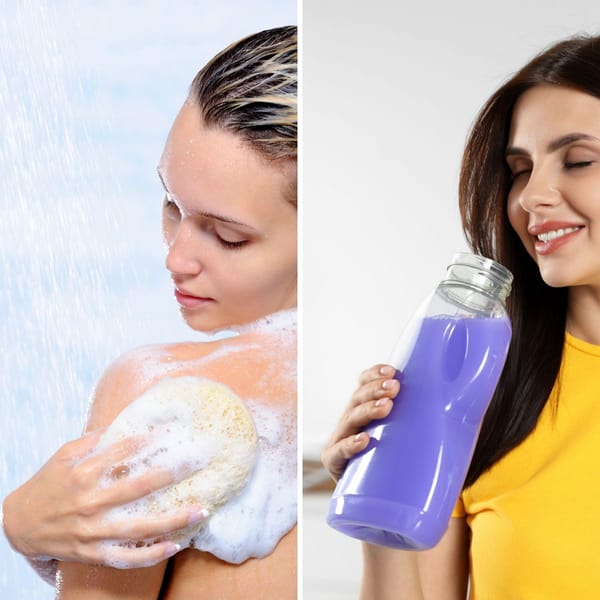Key Takeaways:
- Purple shampoos are formulated to neutralize brassy yellow and orange tones in blonde, silver, and lightened hair.
- Purple shampoos' effectiveness depends on the product's quality, the hair's condition, and proper usage.
- Regular use can maintain the desired cool-toned hair color, reducing the frequency of salon visits for color correction.
Understanding Purple Shampoos and Their Purpose
Have you ever wondered why purple shampoos have become a staple in the hair care routine of those with blonde, silver, or lightened hair? The science behind these shampoos lies in the color wheel. Purple is directly opposite yellow, which means that purple pigments can neutralize yellow tones in hair. This is why purple shampoos are often recommended by hair stylists to clients with light blonde hair or silver hair that tends to develop unwanted warm tones over time.
The primary function of purple shampoos is to tone hair by depositing purple pigments onto the hair strands. These pigments adhere to the surface of the hair, counteracting the appearance of yellow and brassy tones. The result is a cooler, more ashy tone that many people with color-treated hair desire. But the question remains: do purple shampoos really work? The answer is yes, but their effectiveness can vary based on several factors, including the condition of the hair and the frequency of use.
The Role of Purple Pigments in Toning Hair
Purple shampoosyou should follow a few tips are essentially toning shampoos specially designed for those with bleached hair, colored hair, or natural gray hair. Most purple shampoos feature crushed violet pigments that, when used correctly, can significantly tone hair and eliminate brassiness. These pigments work by neutralizing style-ruining brassy and yellow tones that often emerge due to various factors such as exposure to UV rays, heat styling, and environmental pollutants.
When you use purple shampoo, it's important to distribute it evenly throughout wet hair to ensure that all areas with unwanted warm tones are addressed. Leaving the purple shampoo on for the recommended amount of time allows the purple pigments to effectively neutralize brassy yellow and orange tones. However, leaving purple shampoo on for too long can result in a purple tint, which is why it's crucial to follow the product's instructions.
The Impact of Hair Type and Condition
Purple shampoos are not one-size-fits-all solutions. The condition and type of your hair play a significant role in how well a purple shampoo will work for you. For instance, overly porous or damaged hair may absorb more pigment, leading to a more pronounced purple hue. Conversely, healthy, less porous hair might not pick up as much pigment, resulting in a subtler toning effect.
It's also worth noting that hair types that are more prone to dryness, such as curly textures, may require a purple conditioner to accompany the shampoo. This ensures that while the purple shampoo acts to neutralize unwanted tones, the conditioner helps to moisturize and prevent breakage. Consulting with a hairstylist can help you determine the best purple shampoo and conditioner for your specific hair type and needs.
Frequency and Duration of Use
How often should you use purple shampoo? The answer varies depending on the level of brassiness and the desired hair color. Generally, using purple shampoo once a week is sufficient for maintaining a cool tone and preventing brassiness. However, for those with very light blonde hair or white hair, more frequent use may be necessary to keep yellow tones at bay.
The duration for which you leave purple shampoo in your hair is equally important. Most hair care professionals recommend leaving it on for about 3 to 5 minutes. This allows enough time for the purple pigments to adhere to the hair and neutralize yellow tones without over-depositing color. For those with very brassy hair, a hair mask with purple pigments might be a better option for a more intense toning treatment.
The Science Behind Crushed Violet Pigments in Purple Shampoo Purple shampoo work is not just a trend; it's backed by color theory science. The features of crushed violet pigments are key to this toning shampoo, specially designed for those with blonde, silver, or lightened hair. The purple pigment in these shampoos is the direct opposite of yellow on the color wheel, which means it's perfect for neutralizing unwanted yellow or brassy tones. When applying purple shampoo, these pigments temporarily dye the hair, leaving it cooler and fresher.
Moreover, the color purple in these shampoos is not just for show. It's a carefully selected hue that works to counteract the appearance of warmth that can make blonde hair look dull or unhealthy. This makes purple shampoo a great at-home solution for maintaining a vibrant hair color between salon visits. It's especially beneficial for those who have over-processed hair that tends to turn brassy quickly. By incorporating this product into your hair care routine, you can extend the life of your hair color and keep it looking salon-fresh.
Purple Shampoo as a Rescue for Over-Processed and Dry Hair For those struggling with dry hair, purple shampoo might seem like an unlikely ally, but it can be quite beneficial. While it's true that overuse can lead to dryness, using a purple shampoo work regimen tailored to your hair's needs can help maintain the health of over-processed hair. The key is to look for products that not only contain purple pigments but also hydrating ingredients that can help to replenish moisture lost during the lightening process.
However, it's important to note that while purple shampoo is great for toning, it's not a standalone moisturizer. If your hair is dry or damaged, pairing your toning shampoo with deep conditioning treatments is crucial. This will ensure that while you neutralize style-ruining brassy tones, you're also giving your hair the nourishment it needs. Remember, the goal is to achieve a balance between toning and moisturizing to keep your hair healthy and vibrant. So, if you're reaching for that bottle of purple shampoo, make sure you're also treating your locks to some much-needed hydration.
How to Neutralize Style-Ruining Brassy Tones
Brassy tones can be the bane of your hair's existence, especially if you're aiming for that cool, ashy blonde or a perfect silver hue. Purple shampoos are a great at-home solution for keeping those unwanted warm tones at bay. The violet pigments in the shampoo act like a color corrector, neutralizing the yellow and orange tones that can make your hair look dull and lifeless. By incorporating a purple shampoo into your hair care routine, you can maintain the color you left the salon with for much longer.
Not only do purple shampoos keep your color looking fresher, but they also save you from frequent trips to the salon for toning treatments. This is particularly beneficial for those with over-processed hair, which can be more susceptible to brassy tones due to damage and porosity. By using a purple shampoo, you can extend the life of your color treatment and ensure that your hair remains the shade you desire. Remember, though, that while purple shampoo is a fantastic tool, it's not a complete substitute for professional care when needed.
Crafting the Perfect At-Home Hair Care Regimen
When it comes to maintaining that salon-fresh look, crafting the perfect at-home hair care regimen is key. This blog post is dedicated to helping you understand how to effectively incorporate purple shampoo into your routine. It's not just about slathering it on and hoping for the best; timing and technique matter. For instance, leaving purple shampoo on for too long can cause your hair to turn purple, which might not be the look you're going for. A good rule of thumb is to start with a small amount of time and increase as needed based on the results.
Moreover, it's essential to consider the rest of your hair care products. Ensure they're suitable for color-treated hair and don't contain harsh chemicals that can strip your hair of its color and moisture. A nourishing conditioner is also a must-follow step after using purple shampoo to keep your hair hydrated and manageable. By being mindful of these details, you can create a regimen that combats brassy tones and promotes overall hair health. Remember, the goal is to neutralize unwanted tones without compromising the integrity of your hair.
Comparing Purple Shampoo to Regular Shampoo
When it comes to maintaining the cool tones of lightened hair, purple shampoo is not the same as regular shampoo. While regular shampoo cleanses the hair, it does not contain the necessary pigments to counteract brassy tones. Purple shampoo, on the other hand, is a color-safe shampoo that cleanses and deposits color-correcting pigments onto the hair.
Using purple shampoo in place of your regular shampoo once a week can help maintain your desired hair color between salon visits. It's a great at-home solution for those looking to banish brassiness without the need for frequent professional toning services. However, it's important to alternate with other shampoos, such as a clarifying shampoo, to prevent buildup and keep the hair healthy.
The Benefits of Purple Shampoo for Different Hair Colors
Purple shampoo is not just for those with blonde hair. It can also be beneficial for individuals with silver hair, gray hair, and even lightened brunette hair that has developed orange tones. By neutralizing these unwanted tones, purple shampoo helps to enhance the natural beauty of your hair color, whether it's color-treated or natural.
For those with highlighted hair, purple shampoo can help maintain the brightness and coolness of the highlights. It's a convenient way to neutralize brassy yellow and orange tones that can make highlights appear dull and lifeless. By incorporating purple shampoo into your hair care routine, you can keep your highlights looking fresh and vibrant.
Tips for Using Purple Shampoo Effectively
To get the most out of your purple shampoo, you should follow a few tips. First, make sure your hair is thoroughly wet before applying the shampoo. This helps the purple pigments distribute more evenly. Secondly, use a generous amount of shampoo and work it into a lather to cover all brassy areas.
After applying the purple shampoo, comb it through your hair with a wide-tooth comb to distribute it evenly. This helps prevent patchiness and ensures that all areas with unwanted warm tones are treated. Rinse the shampoo out thoroughly with cool water to seal the hair cuticle and enhance shine. Follow up with a purple conditioner or a hydrating conditioner to keep your hair moisturized and healthy.
The Risks of Overusing Purple Shampoo
While purple shampoo can be a game-changer for toning hair, overuse can lead to its own set of problems. Over-processed hair can become dry and brittle if purple shampoo is used too frequently or left on for too long. This can result in a dull, lifeless appearance and increase the risk of split ends and breakage.
To avoid these issues, it's important to use purple shampoo as directed and not to exceed the recommended frequency of use. If you notice your hair becoming dry or developing a purple tint, reduce the frequency of use or switch to a more hydrating shampoo for a while. Always listen to your hair and adjust your routine accordingly.
The Aesthetic Appeal of Purple Shampoo
Aside from its toning capabilities, many people enjoy using purple shampoo because it often smells great and adds a luxurious touch to their hair care routine. The vibrant purple color can make washing your hair feel like a special treat, and the scent can leave your hair smelling fresh and clean.
Moreover, the aesthetic appeal of purple shampoo bottles can add a pop of color to your bathroom decor. Many brands design their packaging with a sleek and modern look, making purple shampoo a stylish addition to your hair care collection.
Summary
Purple shampoos are a valuable tool for anyone looking to maintain cool-toned hair and eliminate brassiness. They work by depositing purple pigments onto the hair, which neutralizes unwanted yellow and orange tones. The effectiveness of purple shampoos depends on various factors, including hair type, condition, and usage. By understanding how to use these shampoos correctly and avoiding overuse, you can keep your hair looking its best between salon visits.
FAQ Section
Q: Can purple shampoo turn my hair purple? A: If left on for too long or used too frequently, purple shampoo can impart a purple tint to the hair, especially on very light or porous hair. It's important to follow and use the product's instructions as recommended.
Q: How often should I use purple shampoo? A: Typically, using purple shampoo once a week is enough to maintain a cool tone and prevent brassiness. However, this can vary based on your hair color and condition. Consult with a hairstylist for personalized advice.
Q: Is purple shampoo only for blonde hair? A: No, purple shampoo can also benefit those with silver, gray, and lightened brunette hair that has developed unwanted brassy tones. It helps to enhance the natural beauty of various hair colors by neutralizing yellow and orange tones.

